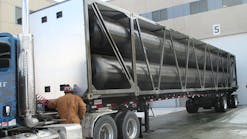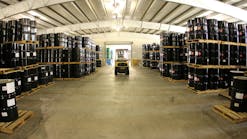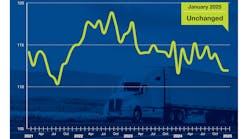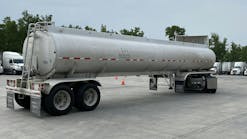Federal officials are on high alert as increasing commercial truck driver turnover rates and lingering effects from the pandemic have further compounded supply chain disruptions.
On July 8, U.S. Transportation Secretary Pete Buttigieg, Labor Secretary Marty Walsh, and Deputy Administrator Meera Joshi of the Federal Motor Carrier Safety Administration hosted a roundtable to discuss truck driver recruitment and retention, as well as other challenges facing the commercial trucking industry. American Trucking Associations’ Bill Sullivan, executive vice president of advocacy, also joined the roundtable discussion.
Truck driver turnover rates exceed 90% for large, long-haul carriers and 72% for smaller carriers, according to DOT.
"Our economy is getting back on its feet, but the pandemic has exposed and exacerbated longstanding challenges in our supply chain, including truck driver retention,” Buttigieg said. “We are bringing government, industry, and key stakeholders together to help support truck drivers and all the consumers and businesses who rely on them."
Last month, President Joe Biden announced the Supply Chain Disruptions Task Force to address near-term supply/demand mismatches. The July 8 roundtable was part of that effort.
During the discussion, Buttigieg moderated a conversation with stakeholders to surface best practices to improve driver retention and limit turnover. Walsh provided an overview of the Department of Labor’s registered apprenticeship programs and how they can be a tool in driver retention. Apprenticeships can allow drivers to enter the industry without the burden of debt from training, help drivers prepare for the challenges of the job, and receive training on innovative technologies, Walsh pointed out. FMCSA said it will facilitate connections between stakeholders and DOL apprenticeship resources and help support the implementation of best practices and administrative actions to improve driver retention.
ATA’s Sullivan addressed several topics, including the industry’s proactive safety record, support for improved infrastructure and the growing need for more truck drivers across the country. The trucking industry moves more than 72% of total domestic freight tonnage, with more than 80% of U.S. communities relying exclusively on trucks to receive their goods, according to ATA data. Projections show the industry will need to hire roughly 1.1 million new drivers over the next decade, or an average of nearly 110,000 per year, to keep pace with retirements and the nation’s growing freight transportation needs, ATA pointed out.
Sullivan stressed the industry’s high priority of reaching new talent—including the recruitment of more urban, rural, female, and younger drivers—to help stem the tide of attrition. The median age of truck drivers is well above national average of all workers.
“Our industry won’t move offshore and is a solid path to the middle class for men and women willing to join,” Sullivan said.
The median salary for a truckload driver working a national, irregular route was reported most recently at over $53,000, and wages have gone up substantially on average in the first half of 2021. Since 2014, private fleet drivers have seen their pay rise from $73,000 to more than $86,000, or a gain of nearly 18%.
“The bottom line is the trucking industry is hiring and paying great wages to drivers,” Sullivan added.
Sullivan also emphasized the positive correlation between increases in compensation and turnover rates. As demand for freight transportation and a scarcity of available truck drivers pushes compensation up, turnover increases as drivers jump between fleets competing for their services. Many small- and medium-sized fleets have increased pay by 10% or more in recent months, with some offering $10,000 signing bonuses.
In addition to the roundtable discussion, FMCSA said it is also supporting state DMVs as they return to—or even exceed—pre-pandemic commercial driver’s license issuance rates. In 2021, an average of 50,000 CDLs have been issued each month, which is 14% higher than the 2019 monthly average and 60% higher than the 2020 monthly average, according to FMCSA.









